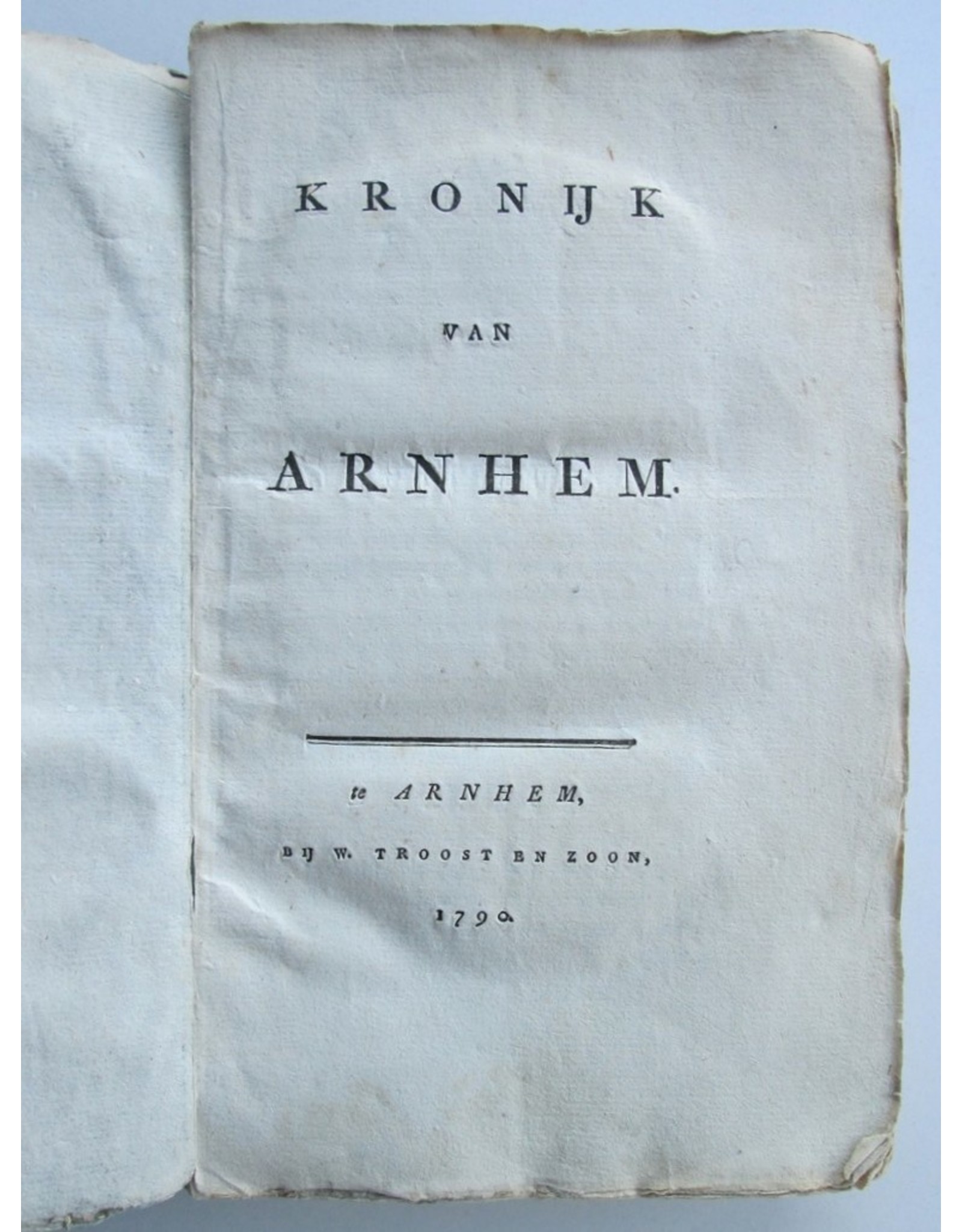G. van Hasselt - Kronijk van Arnhem
| Availability: | In stock (1) |
| Delivery time: | 1-3 days |
G. van Hasselt - Kronijk van Arnhem - Te Arnhem - Bij W. Troost en Zoon - 1790 - 1st edition - [2], [314] pp - Paper wrappers - 14 x 22,5 cm.
Condition: Fragile - with wear, stains. Cover with tears. Still well preserved for such a book after more than two centuries.
Chronicle of the Gelderland capital from 1320 to 1789 by Gerard van Hasselt (1751-1825), the first archivist of Gelderland. Text in Dutch. Some letters and records are in Latin or French. On the cover is a printed quote of the 13th century Zeeland writer Melis Stoke. In the back is a statement of "onverstaenbaere drukfauten" [=printing errors]. Rare documentation, only limited available in NCC.
The author gives short anecdotes, arranged chronologically, of the most striking events in the history of Arnhem. It ends on July 1 of the year 1789 with a kind of account of the spelling and sources used; "de vroegste Stads Rekeningen, [...] Secreta Camerae, de Schepen-acten-boeken, de Raad-signaten, de Publicatie, Commissie en Policie-boeken en andere losse stukken, [...]."
The town was [in 1565] so miserably infested with the plague that 'de Rekenkamer' [= the town council] moved out and resided at Rosendael [Castle]." Four years later, in Antwerp, Christopher Plantin printed the Librorum prohibitorum Index (list of banned books), which had to be checked in bookshops (including the ones in Arnhem), by order of the Duke of Alva. In 1572 a conspiracy was discovered to set fire to Nijmegen and Arnhem. One 'Truijde Kapaps' was "strangled to a stake [...]." Furthermore, some correspondence from William of Orange is included.
¶ It seems that Van Hasselt had a somewhat outdated view of archiving. "He wrote a lot, but threw away the archival documents he used for his article after publication or had them bound with his notes. It must also be borne in mind that the archives were largely unorganized at the time. Many archival documents lay back like old rubbish. Van Hasselt therefore saw his work as a kind of rescue campaign, all the more so as he discovered that many of the books he looked at had been half demolished and affected by moisture and mould." - Dr. F. Keverling Buisman.





















![[Matrijs] Geschiedenis van Arnhem - 2004/2009 [Matrijs] Geschiedenis van Arnhem - 2004/2009](https://cdn.webshopapp.com/shops/296949/files/330727541/262x276x2/matrijs-geschiedenis-van-arnhem-2004-2009.jpg)


![[Matrijs] Buisman [ed.] - Arnhem tot 1700 - 2008 [Matrijs] Buisman [ed.] - Arnhem tot 1700 - 2008](https://cdn.webshopapp.com/shops/296949/files/438727419/262x276x2/matrijs-buisman-ed-arnhem-tot-1700-2008.jpg)
![[Matrijs] Buisman [ed.] - Arnhem van 1700 tot 1900 - 2009 [Matrijs] Buisman [ed.] - Arnhem van 1700 tot 1900 - 2009](https://cdn.webshopapp.com/shops/296949/files/438732131/262x276x2/matrijs-buisman-ed-arnhem-van-1700-tot-1900-2009.jpg)